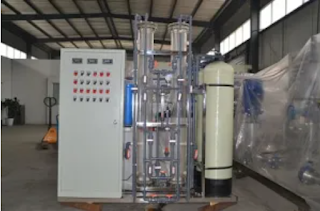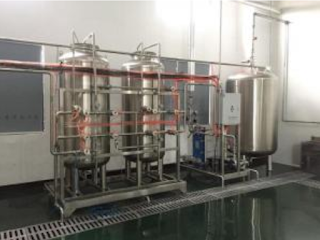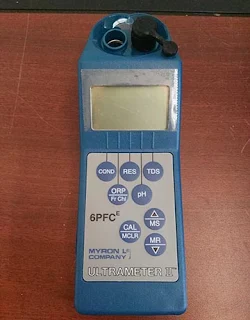The dampening solution chemistry in our press room is controlled by measuring conductivity. It may sound simple. However it is only possible that way by controlling all the variables in our dampening solution on our sheet fed and web offset printing presses. I would like to share with you three factors that show you exactly what we do to get perfect and consistent chemistry for all of our offset printing presses.
1. Consistent water supply before mixing with dampening solution.
We get our water supply from the city (like I think most printers do). Generally it is consistent. But in the spring we get fluctuations.
Here are the variables we see in our water supply.
- Changes in acidity (slight, but they are there)
- It becomes harder in the spring. More calcium and magnesium.
- Gets contaminants. No doubt because of runoff.
This wreaks havoc on our offset presses and we end up fighting emulsification and scumming. In the end it turns out to be bad water.
Here are the solutions that we investigated.
- De-ionized water (below). This is a cheaper system. It uses an ion exchange to remove minerals from the water.
 |
| De-ionized water supply. |
- Distilled (below). Expensive! But it's 100% water. The water is steam fed through condenser coils and cooled.
 |
| Distilled water supply. |
- Reverse Osmosis (below). This is the one that most offset printers use. It is reasonably inexpensive and can be run inline to your water system. It moves water through a filter and nearly all impurities are removed. Provides consistent pH and hardness.
How we solved it.
We chose a water softening system that is reverse osmosis. The chemistry became perfectly consistent for our dampening solution. The investment was worth it. Not just that, no more fluctuating chemistry. We stopped blaming the ink and everything else. So much waste is now saved. I'm sure the price we paid came back to us many times over.
2. A good fountain solution.
There are many suppliers. Each say their's is the best of course. Testing is usually required before making any kind of commitment to them. It involves more than just seeing if the ink and water chemistry balance properly. I will list here several other properties to look for when evaluating your dampening solution chemistry:
1. It is repellent. Stops the ink from sticking to the non-image areas.
2. Lubricates the plate. This helps reduce wear to the non-image areas and maintain it's hydrophilic properties.
3. Keeps the plate cool. This helps the ink maintain it's working properties.
4. Prevents piling. Gives good blanket release and has special additives for this. Check this by tracking how much piling you get on a longer run.
Evaluate all of these things when looking for a good dampening solution.
3. Rigorous testing
Your offset printing dampening solution supplier will no doubt tell you the optimum ounces per gallon to mix into your water supply. You MUST have a good conductivity meter for this because this is the way you can tell you have the proper mixture.
Don't use a cheap one. They give inconsistent readings. Get the ones properly made to measure conductivity, pH, Temperature and resistivity (to tell you the salt concentration). Here is the one we eventually went with and it has worked well for many years.
Lastly, I want to share the main ingredients that a dampening solution supplier can tweak. All dampening solutions have the following ingredients:
- Wetting agents - This lowers the water tension (or surface tension) of the dampening solution. It gives the ability to run the absolute minimum solution on the printing plate. Having it spread so thinly and evenly is key to running smoothly. Isopropyl alcohol accomplishes this as well, but there are now better substitutes.
- Acid - This is to help reduce the solution's pH an thus help keep the non-image areas of the plate sensitive to water. Aluminum printing plates need this kind of chemistry.
- Buffering agents - This helps keep the acid at a consistent level. It means that even if you add more dampening solution to the water, it will not become too acidic.
- Gum arabic - There are many substitutes, but nothing beats gum arabic. It is mother nature's own and is a gift to the offset printing industry. Gum protects the plate from oxidizing while your offset press is down and protects the non-image areas of the printing plate from accepting ink while running.
- Plate conditioners (chemical salts) - This includes anti-foaming and anti-fungal agents. Additionally, the acid can be corrosive to the plate. These chemicals will help minimize that reaction.
Conclusion
Once we had these three factors under control, so many other seemingly unrelated problems just went away. I hope that these points can help you with your dampening solution for your offset printing presses. Leave me a comment if you have anything to say.



Very informative post. I really do hope and pray this stuff works.Thank you.
ReplyDelete